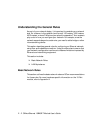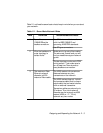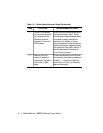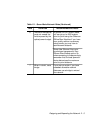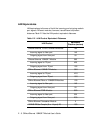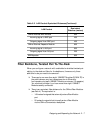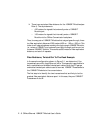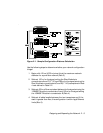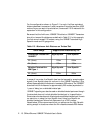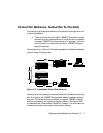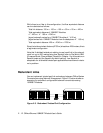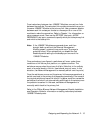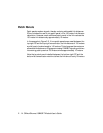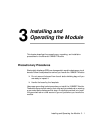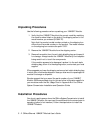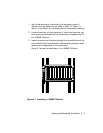
2 - 10 ONline Ethernet 10BASE-T Module User’s Guide
For the configuration shown in Figure 2-1 to work, the fiber equivalent
distance between transceiver A and transceiver B must be less than 4200
meters. As you can see in the calculation, there are still 1510 meters left for
expansion in this configuration.
Be aware that the link from a 10BASE-T Module to a 10BASE-T Transceiver
should not exceed the distances as defined in Table 2-3. In this example,
the link cannot exceed 150 meters, using the 10BASE-T standard High
Squelch mode and 22 gauge wire.
In areas of low noise, the Squelch level can be lowered to accept weaker
signals. (Low Squelch does not conform to the 10BASE-T standard.) This
allows the acceptable link distance to increase to 200 meters. The 10BASE-T
standard limits link distance to approximately 200 meters (equivalent to
1
µsec of delay) on unshielded twisted pair.
10BASE-T signaling can also be used on shielded twisted pair even though
the standard does not include shielded twisted pair in its specification.
Since external noise does not affect signals on shielded twisted pair, there is
no restriction in using the Low Squelch level. Using Low Squelch on
shielded twisted pair allows link distances of up to 300 meters.
Nevertheless, 3Com recommends that you always use the High Squelch
setting except in situations where the link distance exceeds 200 meters.
Table 2-3. Maximum Link Distance on Twisted Pair
Cable Gauge Supports Link Distances Up To:
Unshielded Twisted Pair:
10BASE-T
High Squelch Low Squelch
22 (.6mm) 150m 200m
24 (.5mm) 125m 150m
Shielded Twisted Pair:
IBM Type 1
High Squelch Low Squelch
22 (.6mm) 200m 300m



